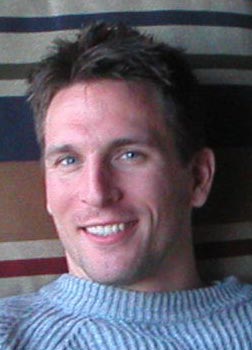After a good night’s sleep, deeper and more restful than I have had in a long time, I woke up energized and ready for a new day. Rafael and I gathered our things and were on our way.
Argentina is incredibly large and with every passing hour on the motorcycle crossing its vastness I was more in awe. For all of you who thought the west of USA is a vast and expansive place (being from the small country of Germany I certainly am one of them), Argentina is a whole dimension bigger. South of Buenos Aires the land was green and fertile. Traveling south, very gradually (almost unnoticeably so) the earth became drier, had less vegetation and appeared more desert like. I am now almost 2000km south of Buenos Aires and the scenery reminds me of the Nevada desert.
A few years ago I read a biography on the explorer Magellan featuring vivid reports of the harsh condition and desolate vegetation of the Argentinean coastline as he traveled south. I can now relate to his desperation as he sailed south looking for passage to the South Sea a.k.a. Pacific Ocean: the weather constantly turning colder, windier and more hostile. It is with good reason his crew tried to revolt against him).
One of my special encounters today was with the wind. The wind has been blowing since we left Argentina’s capital but has been getting increasingly stronger and gustier. I recall writing about the wind during my first day, which was nothing compared to the wind in southern Patagonia. Today one strong wind gust almost blew me off the road and taught me that on a motorcycle one has to be 100% alert 100% of the time.
The other “special” experience of the day was a taste of what it is like to travel alone because Rafael and I lost each other. I had driven slightly ahead of him and stopped at a round-about to wait for him, in vain. After 15 minutes he still had not appeared so I decided to continue on. I met him several hours later on the highway. As it turns out he had taken a different turn to a nearby gas station. Without implying judgment (neither good nor bad) it is striking how different it feels traveling along versus with a friend.
As the flora got more scarce, the wildlife was becoming more interesting. Yesterday I saw herds of wild sheep and animals that looked like llamas. Today I saw many herds of wild ostriches, a laguna with pink flamencos and was frequently watched by hawks or vultures overhead.
The bikes were running well and I felt increasingly comfortable. I do not know if it is just our bikes or if this is normal but they seem somewhat high maintenance: almost every day we have to add a liter of oil (no, there is no leak) and the new tires are about half way worn down after only 200km.
The road that was practically straight for 2000km is now turning more windy, through some valleys, hills and along the ocean (from Puerto Madryn past Comodora Rivadavia – the town that smells like fish and looks quite charming). 50km south of Comodora Rivadavia we approached a beach too beautiful to pass up: Fine sandy beach, dark blue water and enclosed by sandstone cliffs. We decided to stop, of course I had to take a swim in the ice cold water and since the sun was approaching the horizon we decided to set up camp on one of the cliffs overlooking the bay: one of the most picturesque campsites imaginable. I am starting to appreciate the benefits of traveling with a motorcycle - a place like this would be virtually inaccessible to the ordinary backpacker. I watched the sunset sitting on the edge of the cliff overlooking the ocean “and think to myself: what a wonderful world.” Distance traveled: 550km.





























































